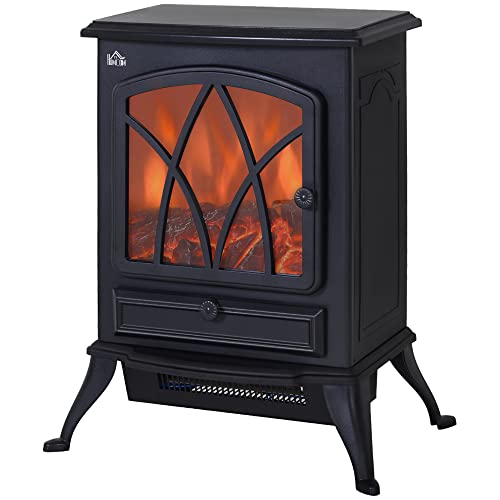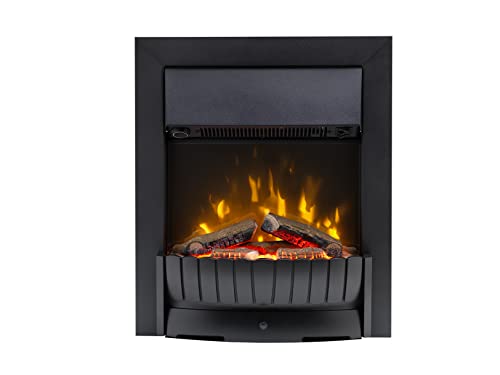
Fireplaces And Stoves
Ajouter un commentaire SuivreAperçu
-
Date de création 31 décembre 1981
-
Secteurs Chocolatier
-
Offres d'emploi publiées 0
-
Vu 1936
Description de l'entreprise
Why No One Cares About Wood Burner Fireplace
 How to Get the Most From a Wood Burner Fireplace
How to Get the Most From a Wood Burner Fireplace
Unlike traditional open fireplaces wood stoves are designed and optimised to burn firewood. This allows them meet stricter emission regulations.
Wood burning stoves produce sparkling yellow flames and soft crackling sounds. They also give you a primal feeling of warmth. However, the smoke it creates includes carbon monoxide and harmful air pollutants, such as benzene, formaldehyde and polycyclic aromatic hydrocarbons.
Efficient
Fireplaces and stoves that burn wood provide a beautiful and natural heat to your home, but they are also incredibly efficient. A top-quality wood burner could be eco-friendly up to 77%. With the rising cost of energy, it is crucial to make sure you are getting the maximum value from your log stove – the good news is that this is much simpler than ever before!
One of the most important factors in how effective a wood burning stove is in the moisture content of the firewood. We recommend using only seasoned wood that has been dried over a period of at least one year and often two years. The drier the wood the more efficiently it burns which means less smoke and less harmful emissions.
A wood burning stove also offers the advantage of being an eco-friendly fuel source which is good for the environment. Furthermore, by buying locally-sourced firewood, you are helping to promote the active management of forests which is a good option for wildlife.
The only thing that a wood burning stove requires in terms of maintenance is that you regularly take away and get rid of ash. This can be a bit of a nuisance, but it’s worth it in order to ensure you get most heat from each log. Additionally, if you wait 2-3 days until the ashes completely cool they can be used as an eco-friendly and non-toxic ice melt. They can be used to polish jewelry and absorb odors.
A wood-burning fireplace is an old-fashioned classic. Although they’re not as popular than gas fires but there’s no denying the beauty and enthralling sound of a roaring fire. These fires are great to cuddle up with on cold nights, and make a warm and inviting area in your home. Make sure you invest in a high-quality wood burner and you’ll be reaping the benefits for many years to be! Our chimney sweeps are available to assist you in getting the most out of your stove. Give us a call now to find out more.
Low Carbon
Wood burners that are clean and efficient are one of the best ways to save the cost of logs while keeping your home warm. Additionally, they also aid in local woodland management, which is a excellent way to help the wildlife in your area.
Wood-burning fireplaces and stoves create minimal pollution when they are maintained properly and used with dry, seasoned and dry firewood. However, if they are not maintained well or used with poor quality wood, the smoke produced by them contains fine particles (known as particulate pollution) which can cause irritation to the lungs and other organs. It also contains carbon monoxide and toxic air pollutants like formaldehyde, benzene, and polycyclic aromatic hydrocarbons. Inhaling air pollution can cause irritation of the lung and lead to asthma attacks wheezing, coughing, and lung irritation. It could also cause cancer, heart disease or premature death.
Many are concerned that wood-burning stoves cause climate change However, this isn’t true. Wood burning produces energy that is carbon neutral. Through the life of a tree, it absorbs carbon dioxide and when burned the carbon absorbed is released back into the atmosphere.
The wood is produced locally, which reduces the amount of pollution released during transportation. It is important to use hardwoods that are seasoned and of top quality. They burn longer and more evenly than softwoods.
Modern, EPA certified wood stoves and heaters (such as those made by Charlton & Jenrick) have significantly lower emissions than older stoves. They have been tested and certified to meet 2020 EPA standards, which are significantly more strict than previous emissions limits.
All wood burning stoves must be fully vented to the outside of your home to ensure they do not create a haze of exhaust within your home. All our current DEFRA-exempt and clean-burn stoves produce clear exhaust when keeping the flames above the wood logs and by using dry, seasoned firewood.
A wood burning stove with a catalytic converter or a hybrid unit can provide the best low-carbon heating solution. These units re-ignite the gasses and particulates from the initial combustion in a subsequent stage by mixing them with superheated air. The remaining gasses and particulates are transported through a catalytic combustion unit for a final and third combustion. This further reduces emissions to levels far below the standards set by the government.
Clean Burn
Cleanburn wood stoves are engineered to burn fuel with the highest efficiency that is possible. This results in a minimum amount of emissions of particles into the air when burning wood. The stove’s air management system controls the intake and exhausting of gases, ensuring that the combustion process occurs in a controlled, sealed atmosphere. It also regulates the flame’s height to minimise emissions and maximise the heat output.
This means that your chimney and surrounding area will be much cleaner than older stoves. Particulate matter (also known as particle pollution) caused by incomplete combustion of wood can cause respiratory problems like wheezing and coughing in people and contributes to the development of heart disease, stroke, diabetes and other serious health problems. Wood burning can also contribute to poor air quality in cities.
The smoke that is emitted from poorly combusted wood contains fine particulate matter and dangerous air pollutants like carbon monoxide, volatile organic compounds, nitrogen oxides, benzene formaldehyde, and polycyclic aromatic hydrocarbons. These particles can reach deep into the organs of the lungs and cause discomfort, damage and even death. Airborne dust can also contaminate the surfaces in your home and give an unpleasant sludge-like feel to rooms.
It is essential to use only high-quality, seasoned and dried firewood when using your wood burner fireplace. Hardwoods such as oak beech, ash and are the best for heating. Hardwoods are dense and BTU content. They also offer more heat than softwoods.
Check with your local authorities to find out whether they have rules concerning wood burning. These could include nuisance/odor regulations and visible emissions, or opacity limits for smoke.
It is crucial to keep the glass of a wood stove that has an open front that is free of deposits and dirt. You can use a dry cloth or oven cleaner spray for this. Alternatively, you can add bicarbonate of soda with a little water to the glass.
Regular maintenance of your chimney and stove is also crucial. Regular chimney cleanings are necessary to remove creosote, and ensure that the flue is operating correctly. It is also recommended to note the dates for periodic inspections on your calendar. This will help you avoid costly repairs and prolong the life of your wood stove.
Low Maintenance
Many people prefer installing wood burning fireplaces due to the natural warmth they generate. However, this kind of fire requires some care and maintenance. If not maintained and cleaned regularly, the chimney, flue and stove can all have the potential to cause fires within your home. These fireplaces are also an excellent source of heat when power is out, especially during winter when snowstorms can cause tree branches to fall and rip up power lines.
By using a wood stove to heat your home, you’ll be able to reduce your carbon footprint when compared to other fossil sources of fuel like gas. Modern wood stoves, inserts, and fireplaces are built to meet EPA standards (Environmental Protection Agency) which means that they emit very little emissions. The more well-seasoned wood that you use the more efficient your stove will be. You’ll need less wood to generate the same amount of heat.
Fireplaces require some care and maintenance. They should be kept away from the combustible materials and have a screen. Keeping the grate clear of debris and ash will allow airflow, which will prevent the fire from dying out too quickly. Also, it will keep your indoors clean. It is recommended that your chimney and stove swept at least twice per year to avoid creosote accumulation, which can be an extremely dangerous fire hazard as well as a clog that can restrict the flow of air.
It can take a while for a new homeowner to master the art of to ignite, light and maintain a constant fire in the fireplace. However, once you have achieved the art of creating and maintaining the fire in your wood burner, it will be a source of enduring enjoyment that provides heat and warmth for your home all year long.
 Wood-burning fireplaces have been in use in a variety of forms for more than 500 years and they’ve gained a new following because of their efficiency and sustainability, as well as the natural warmth and aroma of real wood. If you’re considering installing a new heater, speak with your local certified Regency dealer to learn more about the advantages of a wood stove or an insert for your home.
Wood-burning fireplaces have been in use in a variety of forms for more than 500 years and they’ve gained a new following because of their efficiency and sustainability, as well as the natural warmth and aroma of real wood. If you’re considering installing a new heater, speak with your local certified Regency dealer to learn more about the advantages of a wood stove or an insert for your home.